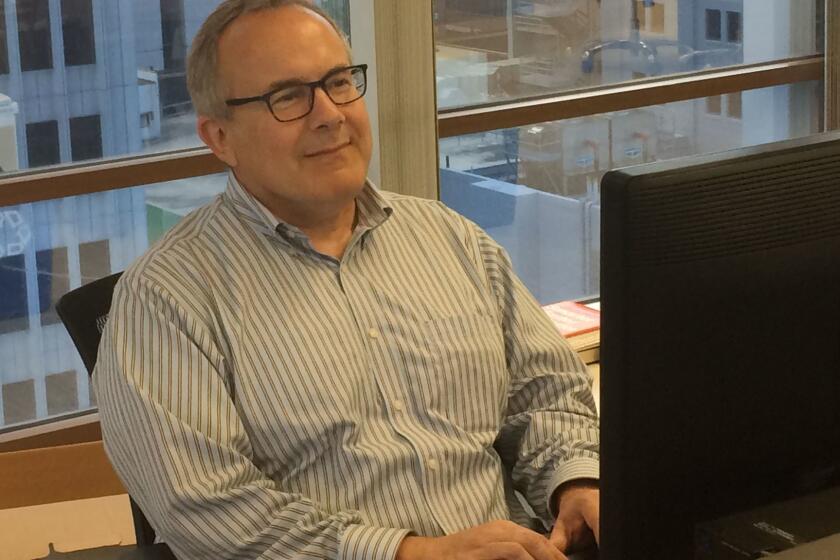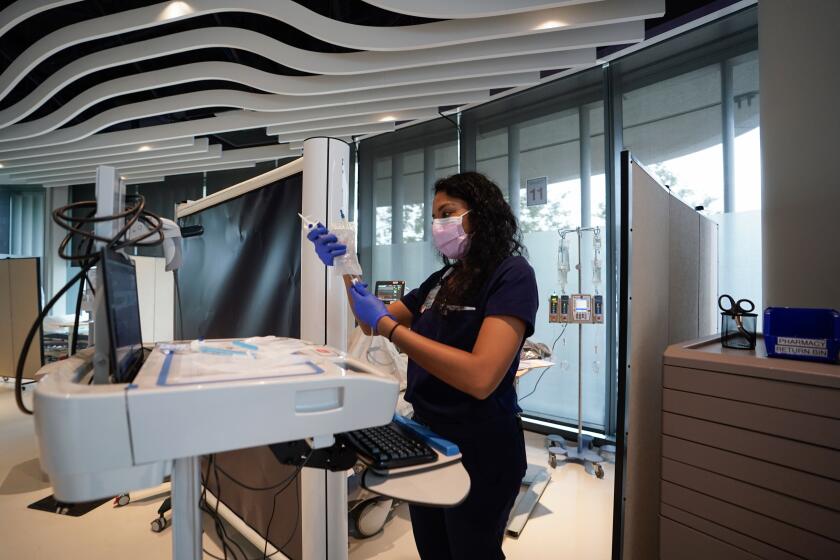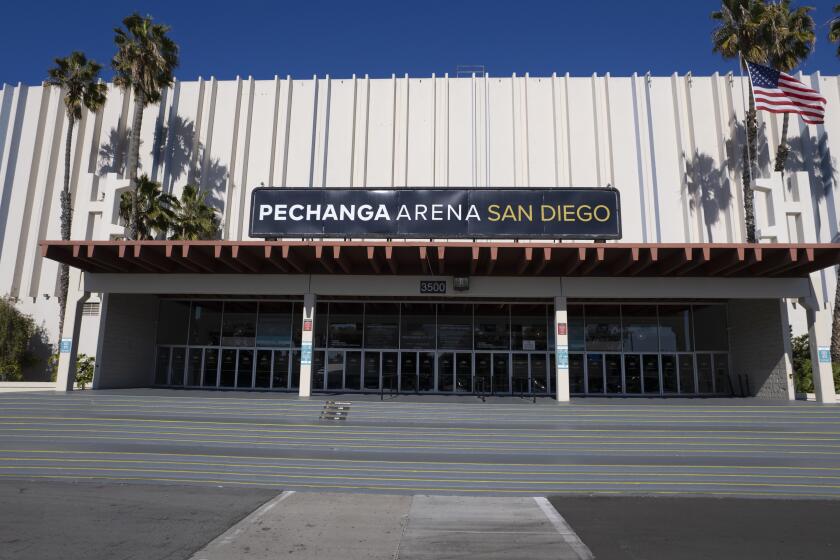For Chargers fans, hope flickers in Oakland
Hope dies hard for Chargers fans. How else to explain those cheering for Oakland to keep the hated Raiders, thus breaking up the unlikely partnership that would help the Chargers leave San Diego for Carson?
Sure, Chargers CEO Dean Spanos says he can build a $1.7 billion stadium and capture the Los Angeles market even without the Raiders. Still, in the resiliency of hope, many fans don’t believe him.
So let’s grasp this slender reed and ponder the case for Oakland.
Both cities share the same problem (as does St. Louis): Their teams stand to make more money in L.A. No deal to stay put is likely before the NFL’s 32 owners decide which can move, a decision some say will come by January.
Until then, everybody sits in the same, becalmed boat. Beyond this business reality, Oakland is well ahead of San Diego by most measures.
For openers, the Chargers won’t negotiate with San Diego. Oakland has met with the Raiders regularly since May.
“There are still discussions, and we are basically making sure we have a common understanding of what their needs are,” is how Claudia Cappio, the city’s head of economic development leading the negotiations, described the status to me last week.
What’s more, Raiders managing owner Mark Davis has offered to contribute $500 million toward his plan for a 55,000-seat, $900 million stadium. The mix is $100 million from the team, $200 million from an NFL loan, and $200 million from sale of seat licenses to fans.
Spanos, through a spokesman, has rained scorn upon San Diego’s proposal to build a 68,000-seat venue for $1.1 billion.
From the NFL’s perspective, San Diego’s deal may seem superior if it can surmount legal and political hurdles. It offers $350 million supported by city and county general funds.
Mayor Kevin Faulconer has ruled out the well-worn idea of developing city-owned land in Mission Valley to raise the cash. Instead, the city is rushing to complete a stadium-only environmental approval.
In contrast, Oakland has long since completed the zoning and environmental process for its preferred “Coliseum City” stadium site. And, with officials ruling out use of general funds, the public contribution may come from taxes from redevelopment.
The NFL prefers subsidies with fewer strings. But Oakland’s approach is better for most taxpayers, because it limits the burden to residents and businesses inside the development.
This brings us to Floyd Kephart, the mysterious Rancho Santa Fe businessman who’s been trying to conjure a deal in Oakland.
Kephart was brought into the mix last autumn by Oakland’s mayor at the time (she lost re-election). He was endorsed by Colony Capital, an international real estate giant that had just pulled out of the Coliseum City project.
The city signed an exclusive negotiating agreement with Kephart that effectively asked him to negotiate deals with the Raiders and Athletics, which share O.co Coliseum at the site.
Critics immediately questioned Kephart, ostensibly a mega-project developer with no development experience. He didn’t help his cause by refusing to identify his backers.
My sense is that Kephart, with an extensive background in media and political strategy along with real estate investment, didn’t wake up one day and decide to become a developer. More likely, he’s a fixer; a prudent hedge.
Indeed, his city vetting included a reference from Baupost Group, according to reporting by Matthew Artz of the Bay Area News Group. (Kephart has said Baupost wasn’t an equity partner.)
Baupost is run by one of my investing idols, Seth Klarman, a secretive man who’s among the world’s best hedge fund managers.
Klarman’s protégé is David Abrams, who left Baupost to start his own hedge fund. In 2007, Abrams led a group that bought 20 percent of the Raiders, which he considered a distressed asset.
My hunch is that Abrams, directly or indirectly, deployed Kephart to Oakland to develop Plan B — get the actors moving toward a deal in case the NFL rejected the team’s Carson ambitions. Put another way, Abrams the minority partner bought a cheap hedge to protect the value of his stake.
To be clear, this is speculation on my part. Neither Abrams nor Kephart would comment.
On the surface, it would seem that Kephart has nearly failed. By this spring, the Raiders were declining to talk to him. Mark Davis, the team’s majority owner, wouldn’t want to publicly undermine his Chargers partnership in Carson.
Then, in June, Kephart submitted a plan that lowballed both the city and the Raiders. Tellingly, he offered to help the Raiders finance a stadium by buying 20 percent of the team, according to a copy leaked to Artz. If Abrams was behind the offer, it would presumably double his group’s stake at a pre-stadium value.
Regardless of origin, the proposal appears to have destroyed Kephart’s support with Oakland’s new political leadership. So was his quixotic quest a bust?
Maybe not. Alameda County supervisors, who opposed use of any public funds, have expressed interest in being bought out, leaving the city in sole control of the stadium site.
On Aug. 21, Kephart gave the city a revised proposal to develop 100 acres of the Coliseum City site. Terms are confidential, but he gave me the broad strokes in a recent interview.
Kephart’s plan would have the Raiders own the stadium, letting the team keep tax breaks for depreciation to offset maintenance costs. And it would provide the 55,000-seat configuration that Davis deems more fan-friendly than larger venues, and fits recent attendance rates.
“You’ve got to give Mark Davis an enormous amount of credit for thinking about the fans,” Kephart said. “He’s saying, I don’t want to build a monument to myself, I want to build a stadium that is best for the fans.”
Kephart’s equity backer, which he still hasn’t disclosed, would spend an estimated $3.2 billion (not including the stadium cost) over 10 years to build 3,500 residences; about 380,000 square feet of retail space; two hotels at 550 total rooms; and 750,000 square feet of office space.
Between land sales and tax revenues from a special district, his consultants say the city could sell “conduit bonds” sufficient to pay the county and cover the $400 million public tab for a stadium.
Major questions remain, including whether the project can retire $95 million in debt that Oakland still owes on a 1996 Coliseum upgrade. This should sound familiar to San Diegans, who owe $52 million for their 1997 retrofit of Qualcomm Stadium.
And Kephart — or his successor — must convince Oakland, the Raiders and someone with $3.2 billion that a mega-development can indeed pay for itself and a stadium.
Then there’s the NFL, which has frozen the chess board until January.
Regardless of whether he has helped or hurt in Oakland, Kephart may not be around to reap the harvest. His negotiating deal expires around Sept. 24. In the meantime, the would-be dealmaker is optimistic.
“The discussions are ongoing,” he said. “We’re going to create a backup as it relates to Carson.”
Update: Kephart emailed me after the column posted regarding my speculation about whether Abrams directly or indirectly inserted Kephart into the Oakland stadium saga. His response: "David Abrams, whom I have met, did not have anything to do with our involvement in Oakland and has not been a part of any of our discussions related to the project."
Get U-T Business in your inbox on Mondays
Get ready for your week with the week’s top business stories from San Diego and California, in your inbox Monday mornings.
You may occasionally receive promotional content from the San Diego Union-Tribune.





